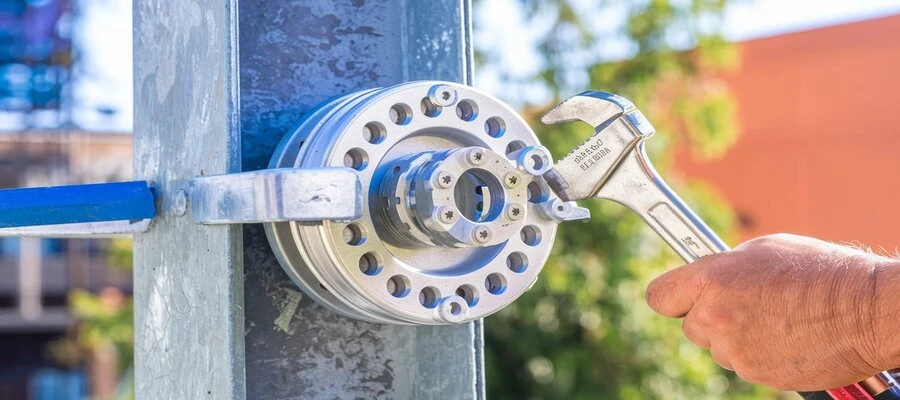
Reducing electrical resistance is crucial in ensuring the efficient flow of electricity within any electrical system. Cable lugs, as essential components in electrical connections, play a significant role in this process. By creating secure and stable connections, cable lugs minimize electrical resistance, enhancing the performance and durability of electrical circuits.
This article delves into how cable lugs contribute to reducing electrical resistance and why their proper use is vital for any high-performing electrical system. Understanding the interaction between electricity and resistance, and how cable lugging helps in reducing electrical resistance, is imperative for optimizing the functionality of electrical systems.
Understanding Electrical Resistance in Cable Connections
Electrical resistance is the opposition that a material or component offers to the flow of electric current. Resistance in electrical connections can arise due to several factors, including the type of materials used, the quality of the connections, and even environmental conditions.
- Material Quality: High-resistance materials can significantly impede the flow of electricity, leading to energy losses and heat generation.
- Connection Integrity: Poor connections can introduce points of high resistance, adversely impacting the overall efficiency of the electrical system.
To minimize electrical resistance, it is vital to use high-quality materials and ensure robust connections. Proper connection methods, such as cable lugging, are instrumental in achieving low resistance. Effective cable lugging minimizes the issues that can stem from suboptimal connections, ensuring the system operates efficiently.
Why Secure Electrical Contacts Are Essential for Reducing Resistance
Stable and secure electrical contacts are paramount to reducing resistance. Loose or poorly connected contacts can create high-resistance points, resulting in increased electrical losses and potential overheating.
- Energy Efficiency: Secure contacts ensure minimal energy loss, making the system more efficient.
- Safety: Properly connected contacts reduce the risk of overheating and electrical fires, enhancing overall safety.
The Role of Cable Lugs in Creating Secure Electrical Contacts
Cable lugs, by design, provide a secure and reliable means of connecting electrical cables. Made from high-quality conductive materials such as copper or aluminum, they offer excellent electrical conductivity and mechanical strength.
- Mechanical Stability: Cable lugs provide a robust mechanical connection that withstands vibrations and mechanical movements.
- Electrical Conductivity: High-quality cable lugs offer low electrical resistance, ensuring efficient current flow.
- Chemical Resistance: Advanced coatings and materials protect against corrosion and degradation.
- Easy Installation: Designed for straightforward crimping techniques, enabling quick and secure connections.
These characteristics make cable lugs indispensable in creating secure and low-resistance electrical connections. Implementing these components correctly is key in reducing resistance electricity effectively, thereby enhancing the overall performance of the electrical system.
The Advantages of Using High-Quality Cable Lugs
Using high-quality cable lugs brings several advantages:
- Durability: High-quality materials ensure long-lasting connections.
- Reliability: They offer consistent performance under various conditions, reducing maintenance needs.
- Efficiency: Superior conductivity minimizes energy losses, enhancing system efficiency.
- Safety: Enhanced safety due to proper insulation and durable build quality.
How the Design of Cable Lugs Minimizes Resistance
The design of cable lugs is tailored to minimize electrical resistance through several means.
- Conductive Materials: The use of copper or aluminum ensures low electrical resistance.
- Surface Treatment: Plating and coating techniques are used to enhance the conductivity and corrosion resistance of the lugs.
- Shape and Size: The shape and size of the lugs are optimized for maximum contact area, ensuring minimal resistance.
- Secure Crimping Areas: Designed to ensure tight crimping with minimal voids, enhancing the integrity of the connection.
These factors collectively contribute to the effectiveness of cable lugs in reducing electrical resistance and ensuring the efficient operation of the electrical system. Proper insulation and ergonomic designs further aid in maintaining low resistance throughout the lifespan of the connection.
Comparing Copper and Aluminum Lugs in Terms of Resistance
Copper and aluminum are the two most common materials used for cable lugs. While both have their advantages, copper lugs generally offer lower electrical resistance compared to aluminum lugs.
- Copper Lugs: Known for superior conductivity and minimal resistance, making them ideal for high-performance applications.
- Aluminum Lugs: Lightweight and cost-effective but with slightly higher resistance compared to copper. They are suitable for applications where weight and cost are critical.
Choosing between these materials depends on the specific requirements of the electrical system. Copper is often preferred for its superior performance, whereas aluminum can be a viable alternative for less critical applications where weight and cost are major considerations.
The Impact of Proper Crimping on Electrical Resistance
Proper crimping is essential in ensuring that cable lugs perform optimally. Crimping involves deforming the lug to create a secure mechanical and electrical connection with the cable.
- Secure Connection: Proper crimping eliminates gaps and ensures a tight fit, reducing resistance.
- Reliable Performance: Well-crimped lugs offer consistent electrical performance, minimizing energy losses.
- Enhanced Safety: Proper crimps prevent issues such as sparking or overheating, which can lead to dangerous failures.
- Corrosion Resistance: Secure crimps protect against environmental factors that may cause degradation over time.
Proper crimping thus plays a critical role in reducing resistance and enhancing the efficiency and safety of electrical systems. Ensuring that cable lugs are crimped correctly is vital in maintaining the integrity and performance of the electrical connections.
How Improper Crimping Can Increase Electrical Losses
Improper crimping can lead to several issues:
- High Resistance Points: Gaps or loose connections can create high-resistance points, leading to increased energy losses.
- Overheating: Poorly crimped connections can overheat, posing safety risks.
- Reduced Efficiency: Inefficient connections can compromise the overall performance of the electrical system.
- Safety Hazards: Increased risk of fires and electrical failures.